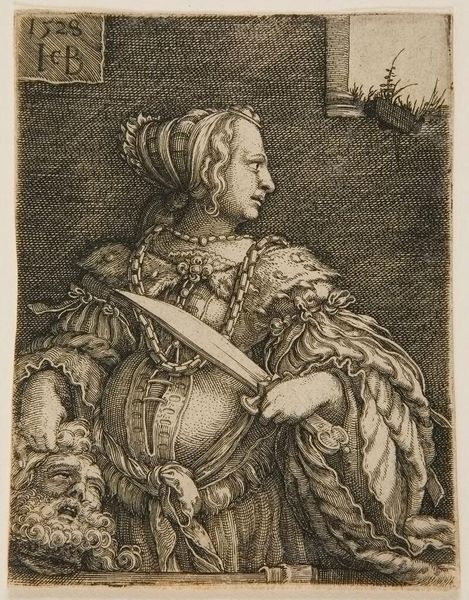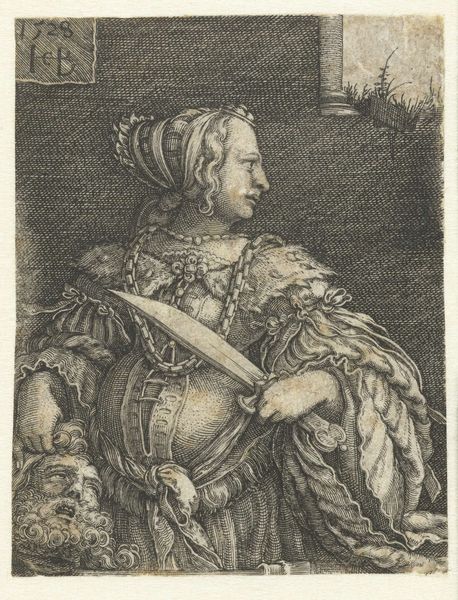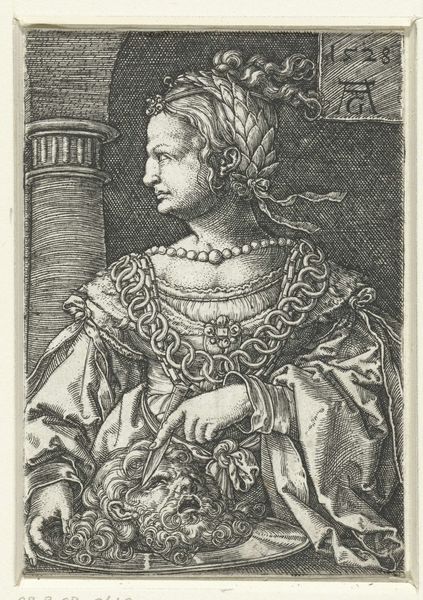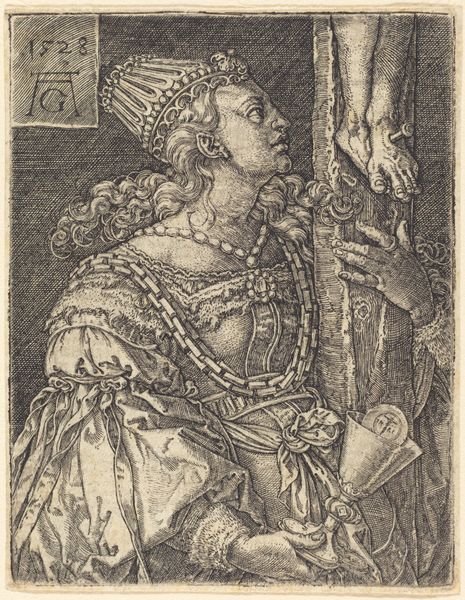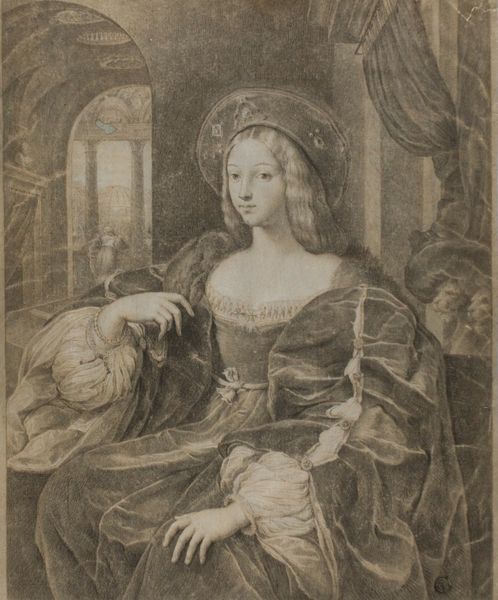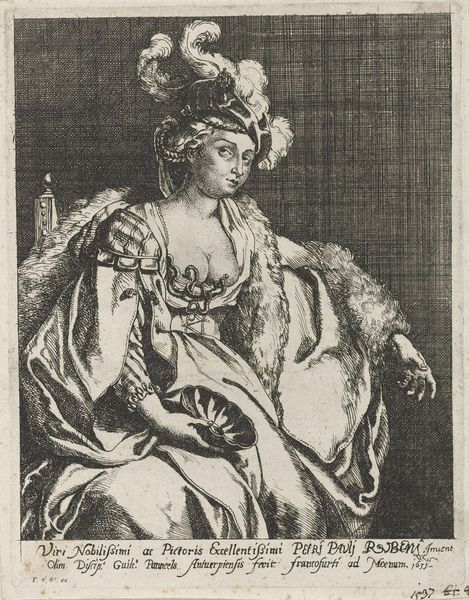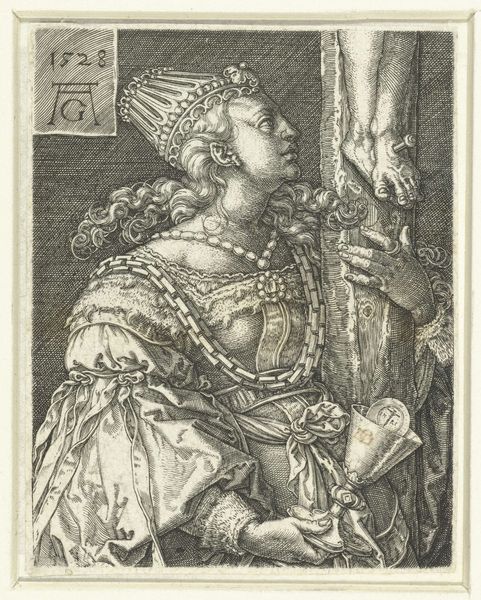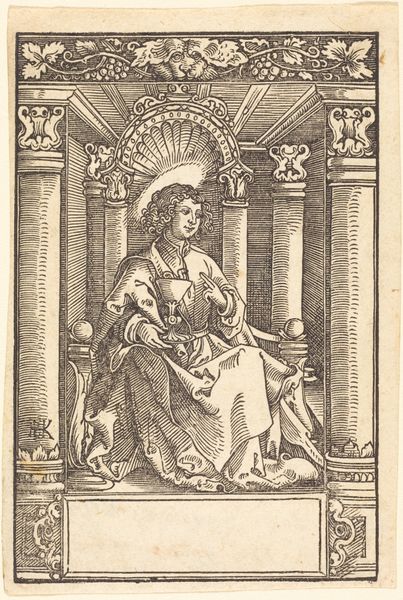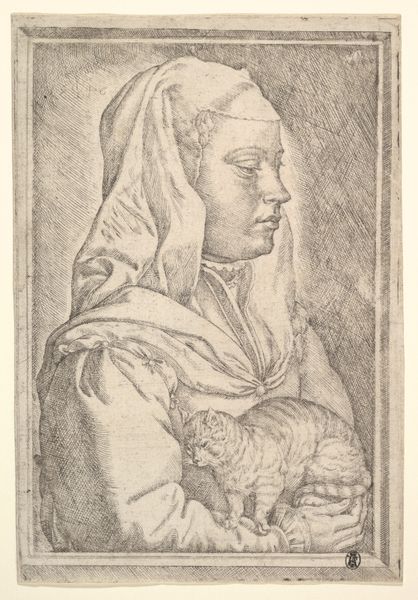
print, engraving
#
portrait
# print
#
figuration
#
history-painting
#
italian-renaissance
#
engraving
Dimensions: sheet (trimmed to plate): 8.4 × 6.7 cm (3 5/16 × 2 5/8 in.)
Copyright: National Gallery of Art: CC0 1.0
This is Barthel Beham’s "Judith with the Head of Holofernes," made sometime in the first half of the 16th century. Here, Judith holds the instrument of her triumph: a sword, and the severed head of Holofernes, a symbol of defiance against tyranny and female power. The image of the severed head, laden with symbolic weight, echoes through time. We see it in Caravaggio's "David and Goliath," and even earlier, in classical depictions of Medusa. This motif carries a powerful, almost primal charge. The act of decapitation is more than mere violence; it represents the ultimate triumph of intellect and will over brute force. It speaks to our deepest fears and desires, engaging us on a subconscious level. Consider how the image of Judith, a pious widow, wielding such brutal force, challenges our expectations. It is not a linear progression but a continuous return, an echo of humanity's complex relationship with power, gender, and violence.
Comments
No comments
Be the first to comment and join the conversation on the ultimate creative platform.
